GREEN GRADS was founded in 2021 by design journalist Barbara Chandler. Its mission is to identify and provide a platform for recent UK graduates who are “engaging with eco-issues, such as sustainability, climate change, circular production, waste and pollution, diminishing resources, biophilia, bio-diversity and much more”.
This year, the GREEN GRADS hub ran from September 16-18 on the third floor of the Heal’s Building in London during the London Design Festival. An exhibition featured the work of 55 graduates who had been identified by Chandler at shows such as New Designers. The hub, of which URGE was one of the sponsors, also featured a Komodo’s event in which the GRADS pitched their ideas to potential future partners, plus workshops, resources and talks, including one by URGE’s Alexie Sommer and Ella Doran.
In addition, the hub staged the third GREEN GRADS awards, which were presented by Ella Doran. Judged by a panel of industry experts, it identified the pick of this year’s graduates. The winners are:
THE SHOW IMPACT AWARD
For the person or project making the strongest statement at the show.
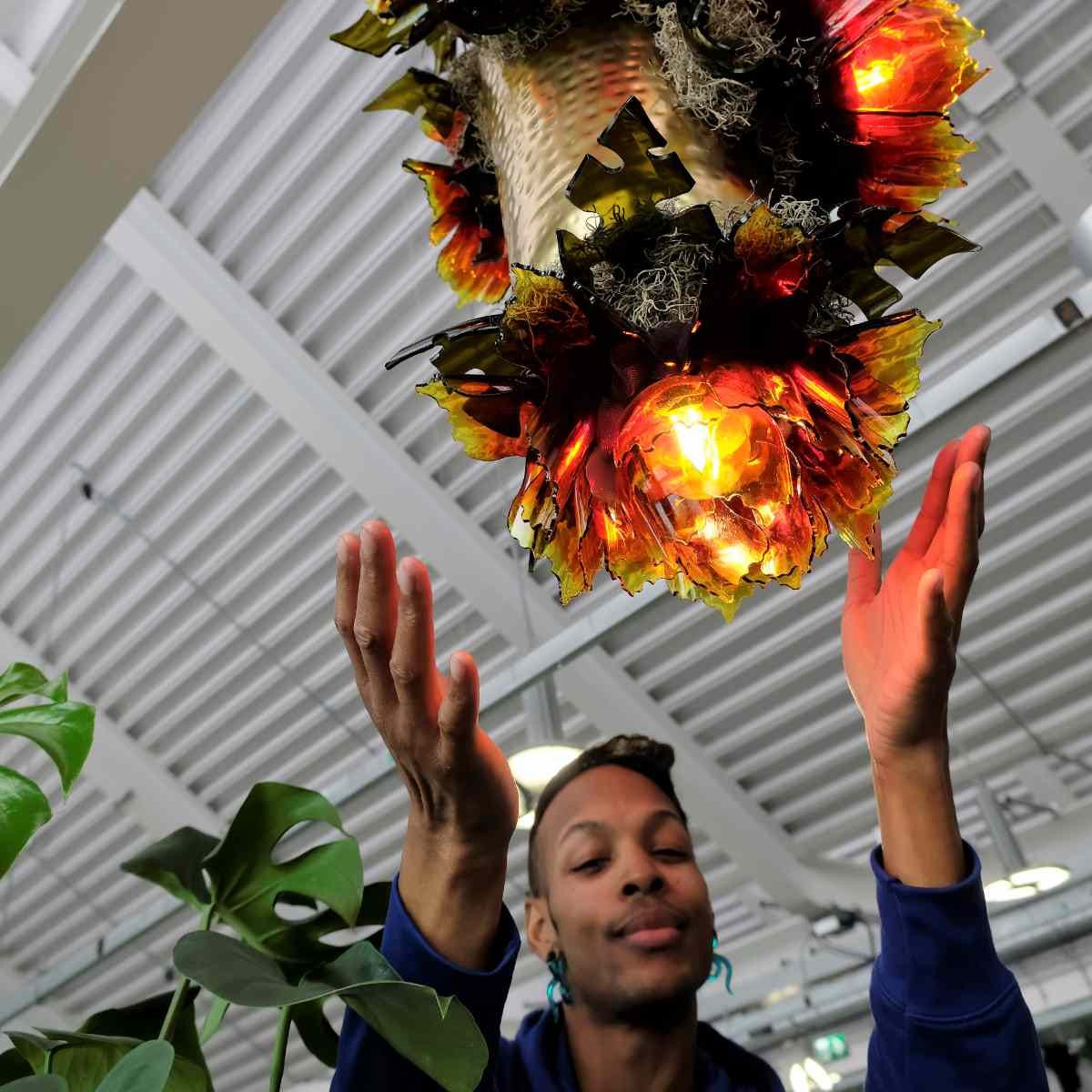
Winner: William Harris for Wonka Bar Realness
An accomplished glass artist, who graduated from California College of the Arts with a BFA in Glassmaking and from the MA Design Products at the Royal College of Art, William fashions spectacular chandeliers from discarded bottles. “From garbage to gorgeous…I see potential where most see trash, and have the skills to add an illusion of something more expensive,” he says.
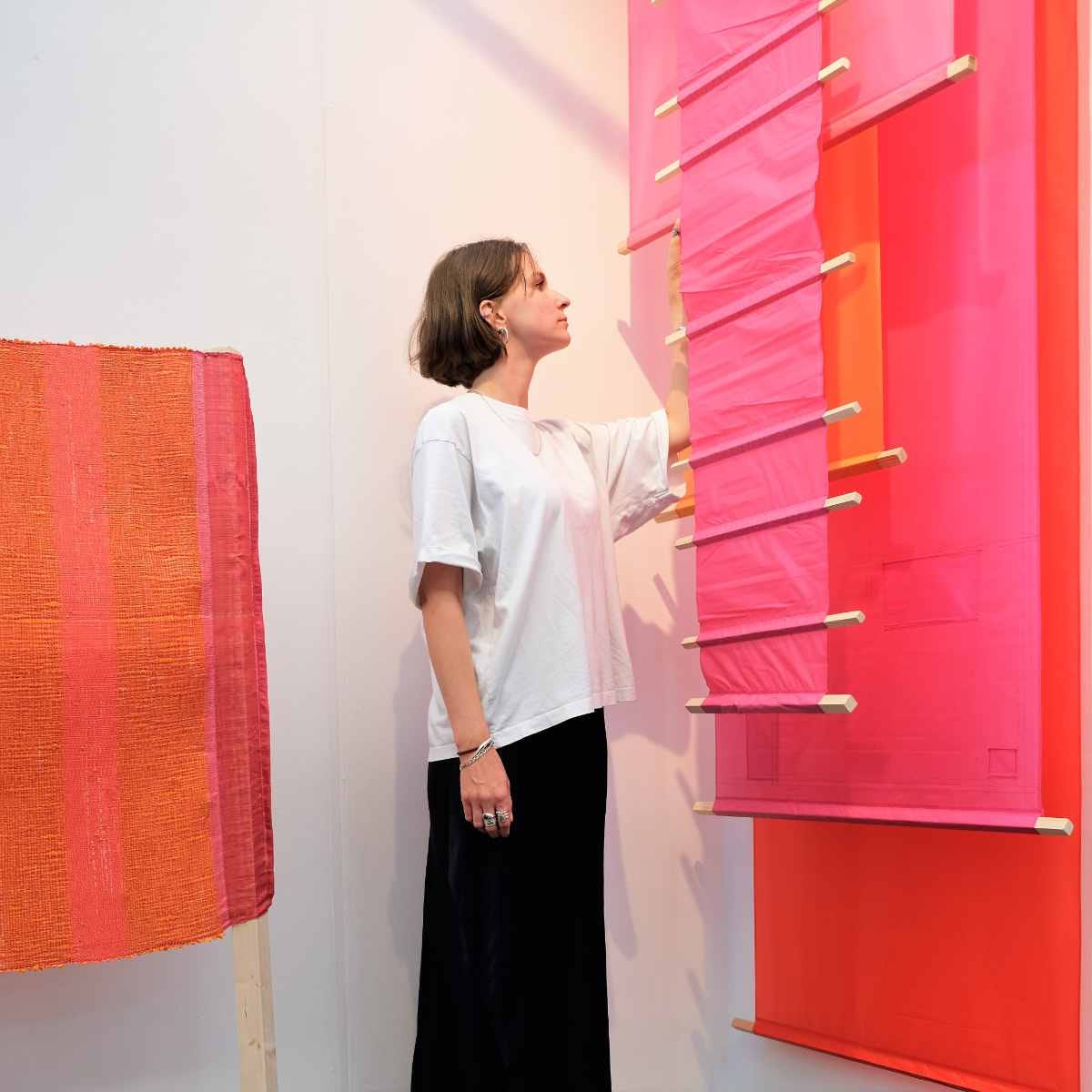
Runner up: Alice Coomber for Filtered Light
Alice’s beautiful panels, designed as screens or blinds, are woven from waste plastic – in fact, their striking orange hue comes from Sainsbury’s carrier bags. They highlight the ubiquity and potential harm of microplastics, released from synthetic textiles used in our interiors and clothing. A system of soaking in filtered water, devised with the University Science Department at Brighton, where ALice studied 3D Design and Craft, is even able to measure the amounts of microplastics trapped. “I am raising awareness of microplastics as a long-term environmental issue and from this investigating alternative ways of using waste plastics in textiles,” she says.
THE CHANGE MAKER AWARD
For the person or project most likely to make a difference in the future.
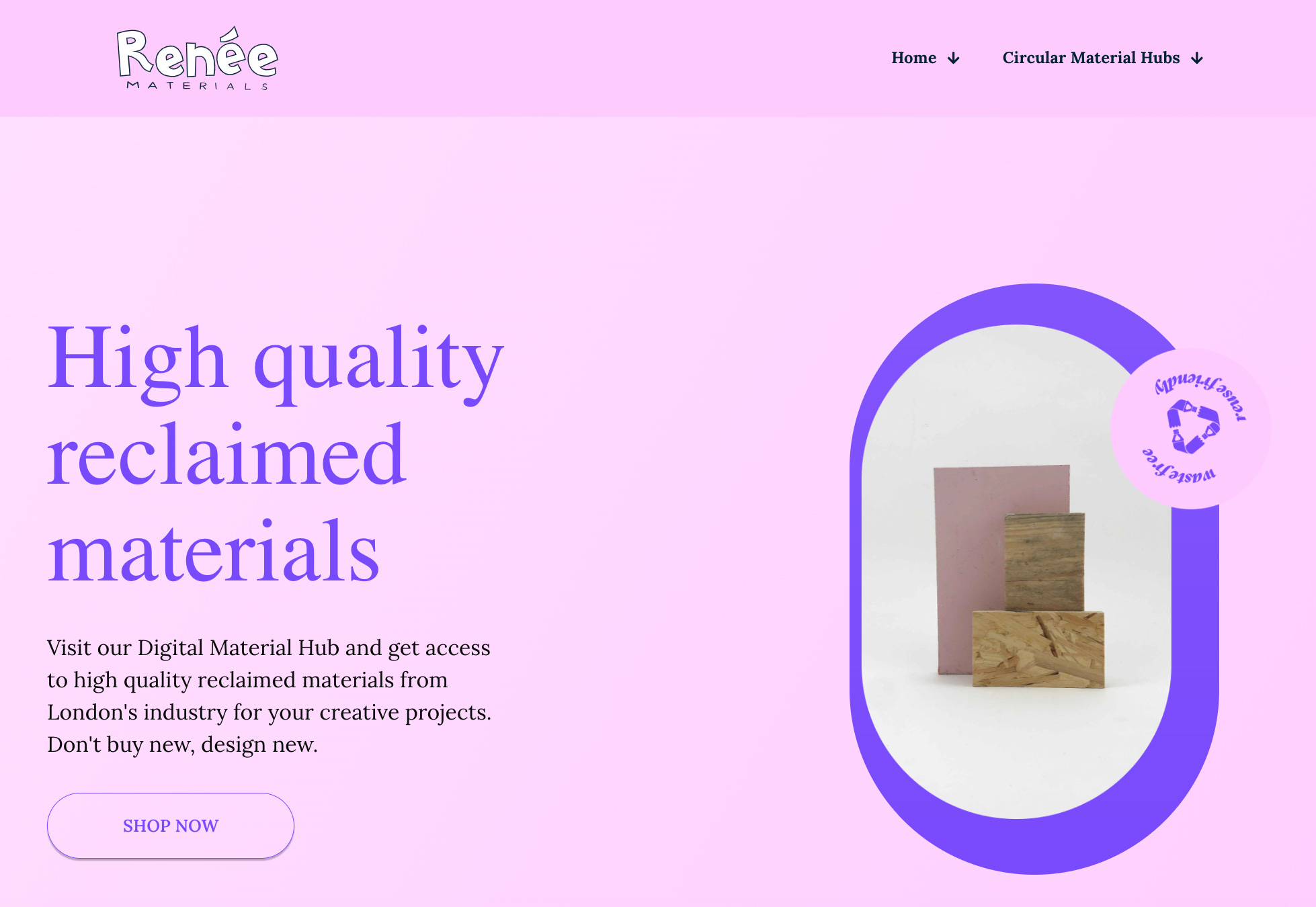
Winner: Frieda Bischoff and Vassi Deij of Renee Materials
Frieda and Dassi are graduates of the MA in Design for Social Innovation and Sustainable Futures at the London College of Communication. On a planet with diminishing resources, we need radically to change the way we source and dispose of materials. Companies and businesses account for 28% of London’s waste – and more than 60% of what is thrown away is reusable. At the same time, UK art and design students could be spending as much as £400 on materials for a project. Renee Materials is a digital market place that connects companies’ leftover waste with art and design students, creatives and makers who need supplies. “We save emissions twice. First we cut waste, and then we cut the use of new materials. At the same time, we ease the costs of the creatives, who typically reduce what they have to spend on high-quality materials by half,” they say.
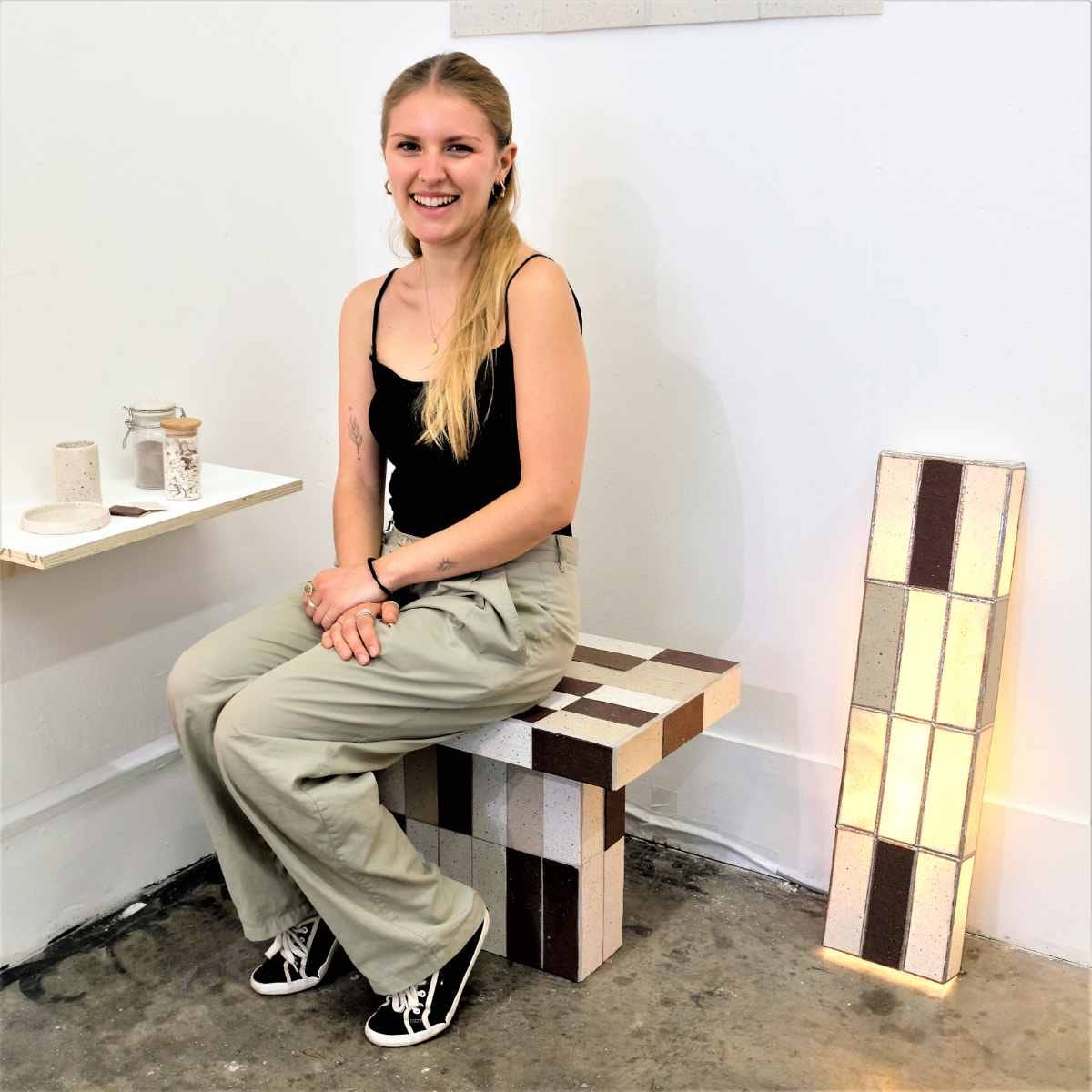
Runner up: Rosy Napper for ReCinder
ReCinder is a 100% recycled material made from discarded broken ceramic and waste ash that has been diverted from landfill. It is a greener, waste-based alternative to industrially- processed clay, and can be used for tiling, tableware and even lighting due to its unique translucent quality. ReCinder is also self-glazing, so no need for the conventionally-mined ingredients that destroy the environment. Rosy is a graduate of the BA in Ceramic Design, Central Saint Martins.
THE EARTH AWARD
For the person or project who loves the planet the most
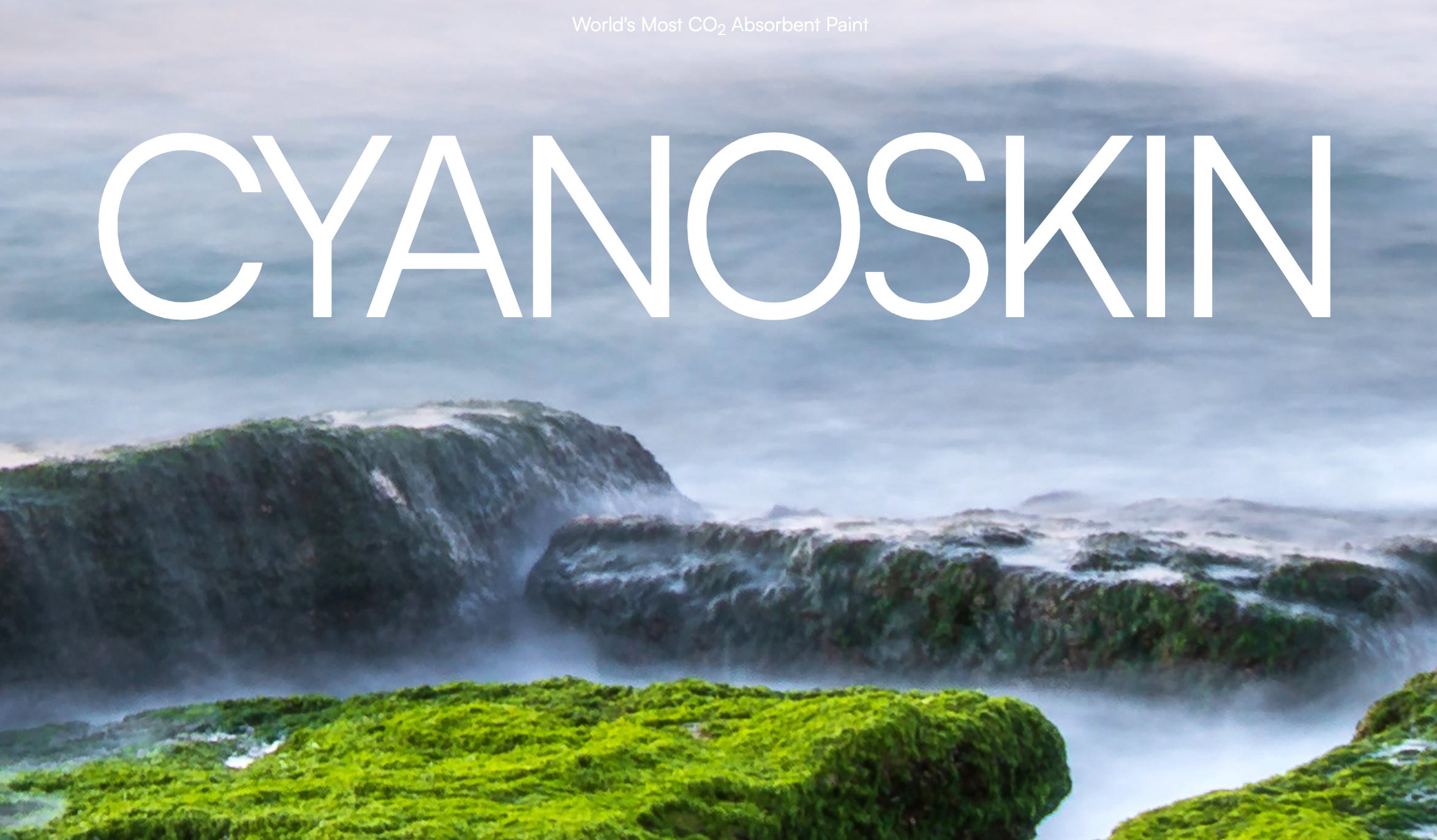
Winner: Emma Money for Cyanoskin
Cyanoskin is an innovative “living” paint which transforms buildings into carbon dioxide-absorbing structures, thus reducing emissions and mitigating urban pollution. It’s a collaboration between GREEN GRAD Emma (from the MA in Textiles at the RCA), algal research artist biologist, Holly Souza-Newman and business mogul Antoinette Nothomb, supported by Carbon 13, Barclays Eagle Labs and UKGBC. The plan is a 2024 launch. The start-up has won the Young ChangeMakers Grant and the Climate Entrepreneurs Club 1st Place Prize.
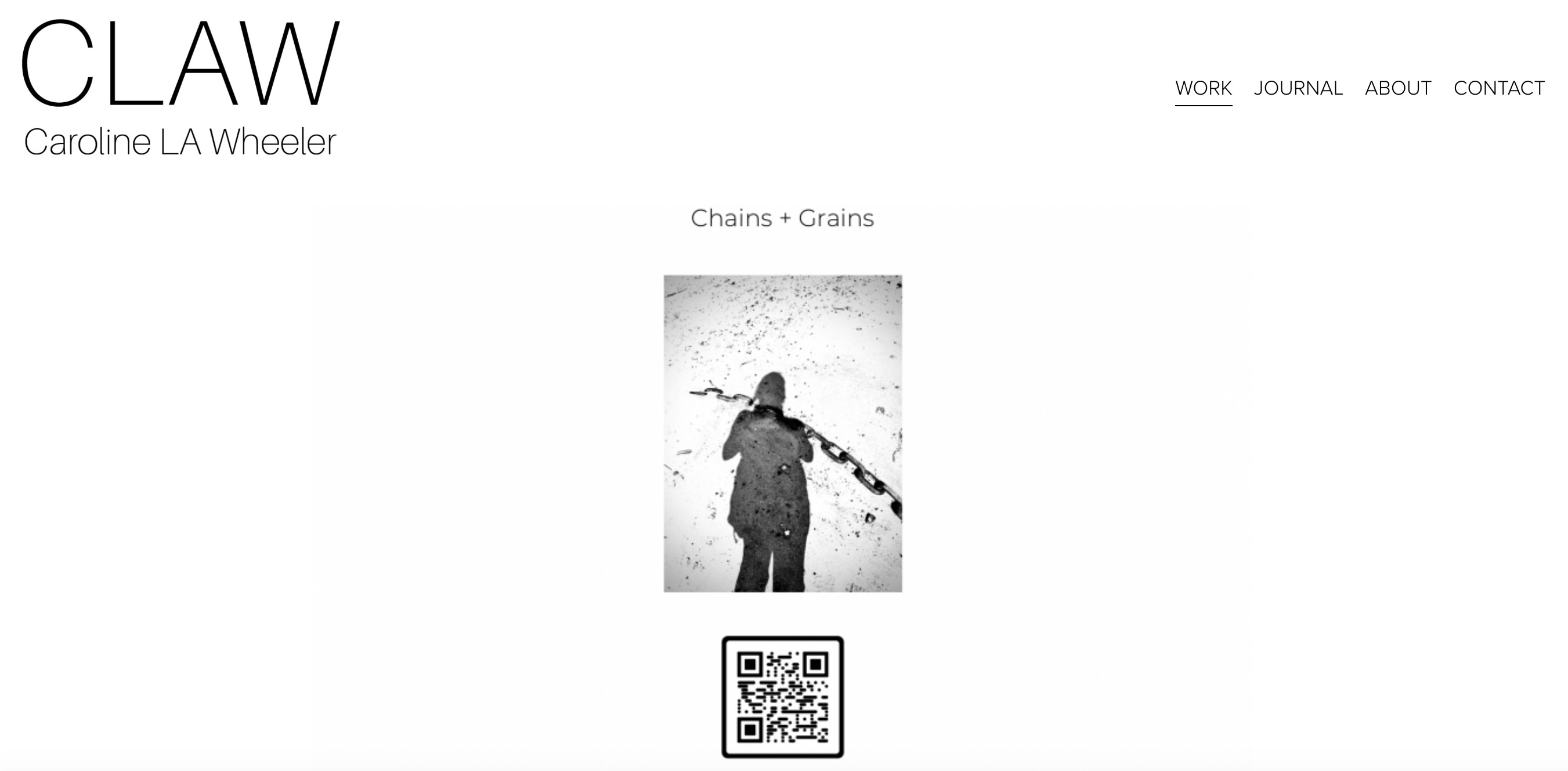
Runner up: Caroline LA Wheeler for Chains + Grains
RCA MA Jewellery and Metal grad Caroline created Chains + Grains: An Act of Measured Material as an exclusive artwork for the GREEN GRADS HUB AT HEAL’S. Sand is the second-most used resource on Earth, after water, and the bedrock of human construction. But the world is running out of sand, with humans to blame. Here is a “chain” of linked images and text protesting the impact of sand depletion on landscape and habitats, and other knock-on environmental effects. It measures 66 feet, the length of a historic Gunter ’s chain. This historic surveyor’s tool dates back to around 1620 and was used to measure out not only the British Empire, but also the American wilderness and early settlements. It has 100 links, usually marked off into groups of 10 by brass rings or tags. It has left a permanent imprint on the way land is measured and divided in the United Kingdom and America.
ECO STORIES: THE EPSON TEXTILE CHALLENGE
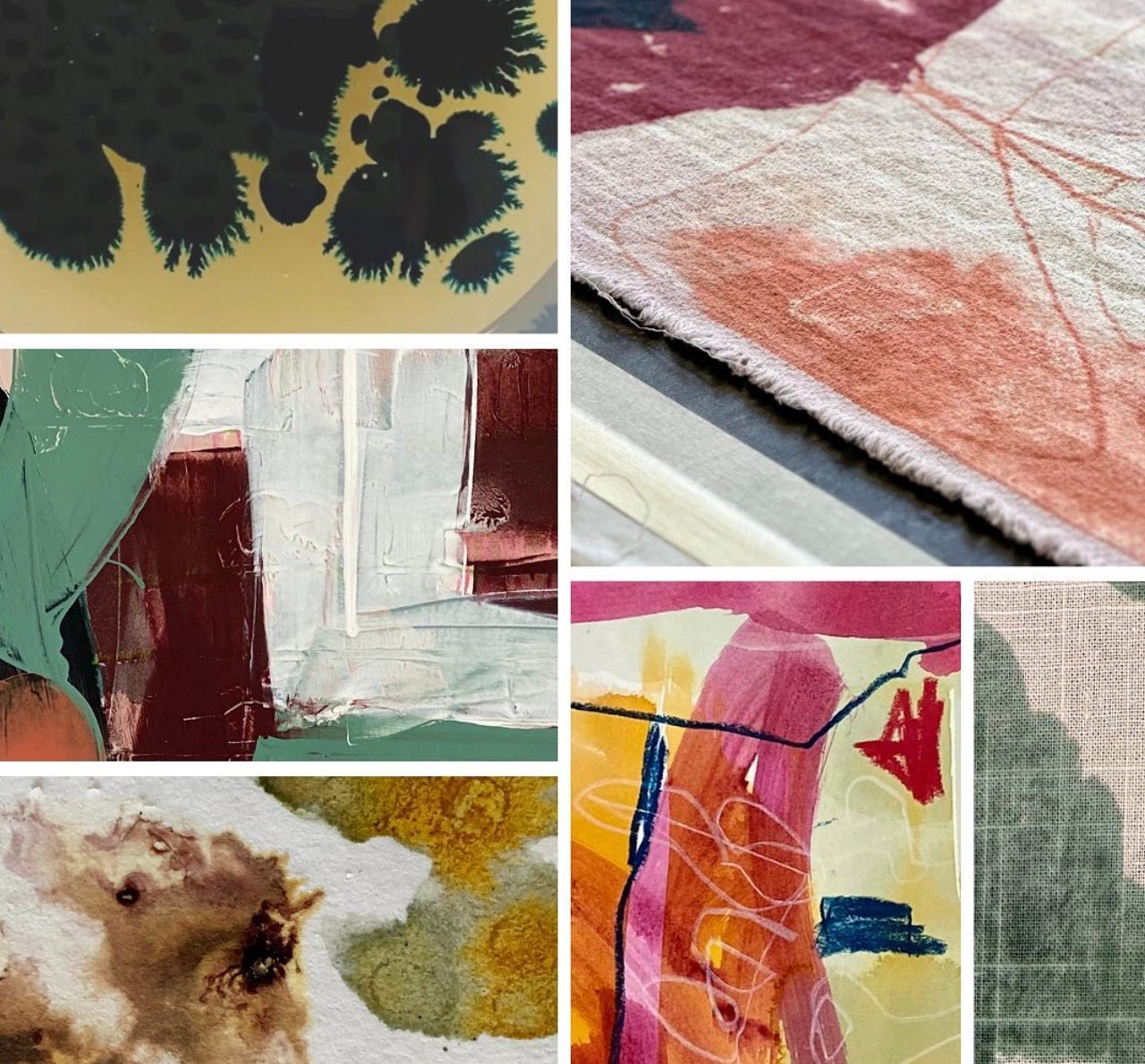
Winner (1): Becky Brentnall for The Garden that Inspired
Becky’s childhood garden inspired in her a lifelong passion for nature and in particular for flowers grown in the UK. This now finds expression in dramatically large-scale textiles, up to four metres in length. These are hand-painted and screen-printed onto natural fabrics using Manutex, a seaweed-based thickener that makes reactive dyes into a print or paint paste. Before returning to studies, Becky trained and worked as a landscape gardener and a florist. A graduate of the BA Surface Pattern and Textile Design course at Staffordshire University, she says, “My work celebrates and promotes nature on a large scale, and I want it to enrich home and business interiors.”
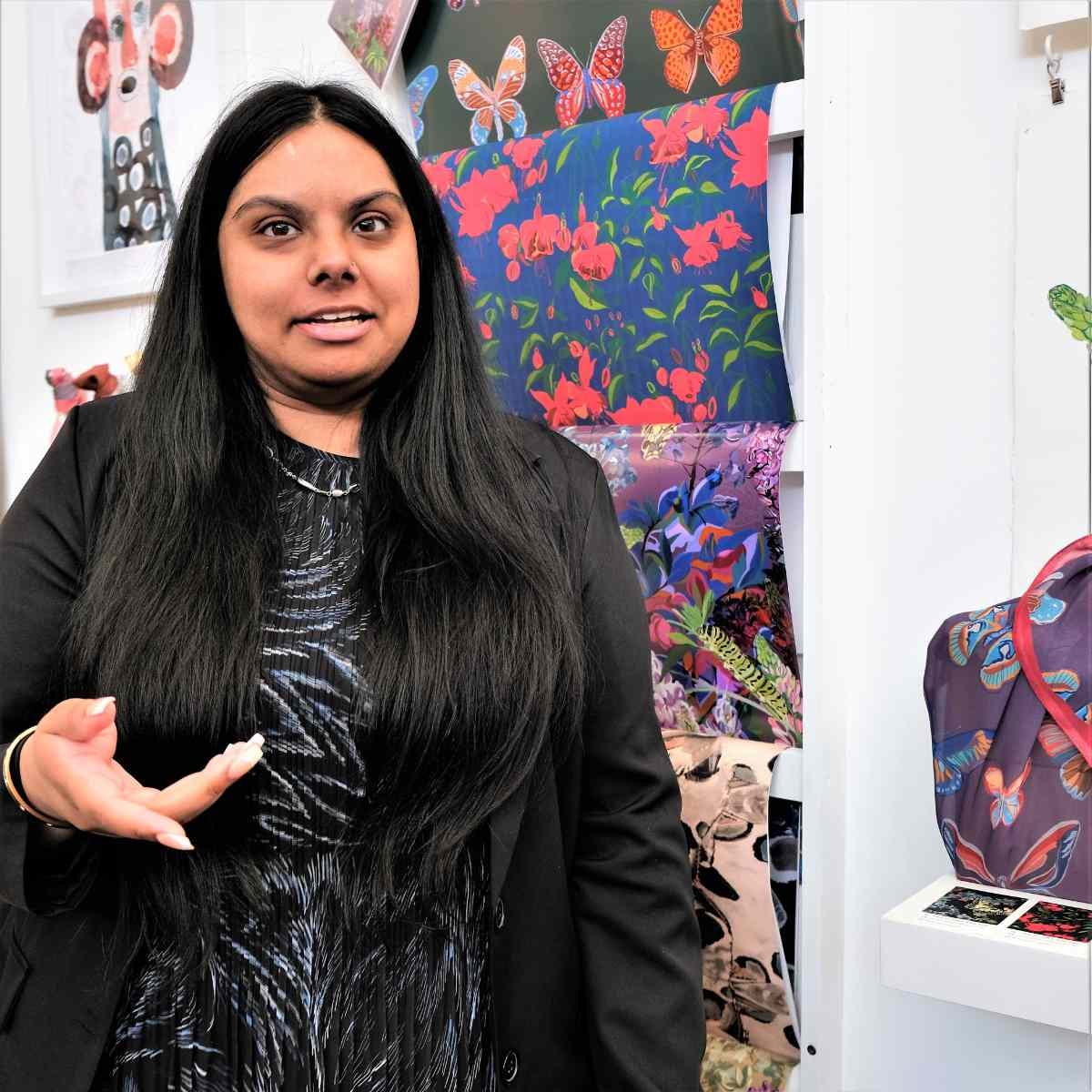
Winner (2): Zaynah Arif for Lepidoptera
A graduate of the BA in Textiles and Surface Design course at the University of Bolton, Zayna’s beautiful hand-painted artwork carries a strong message. With numbers of butterflies and moths declining, Zayna is adorning stationery, coordinating wrapping paper and giftware, together with unique reversible appliqué bags, with images that call attention to their plight. “We must campaign to save all the pollinators in the same way as we have campaigned to save the bees,” she says.
AWARD FOR TEXTILE INNOVATION
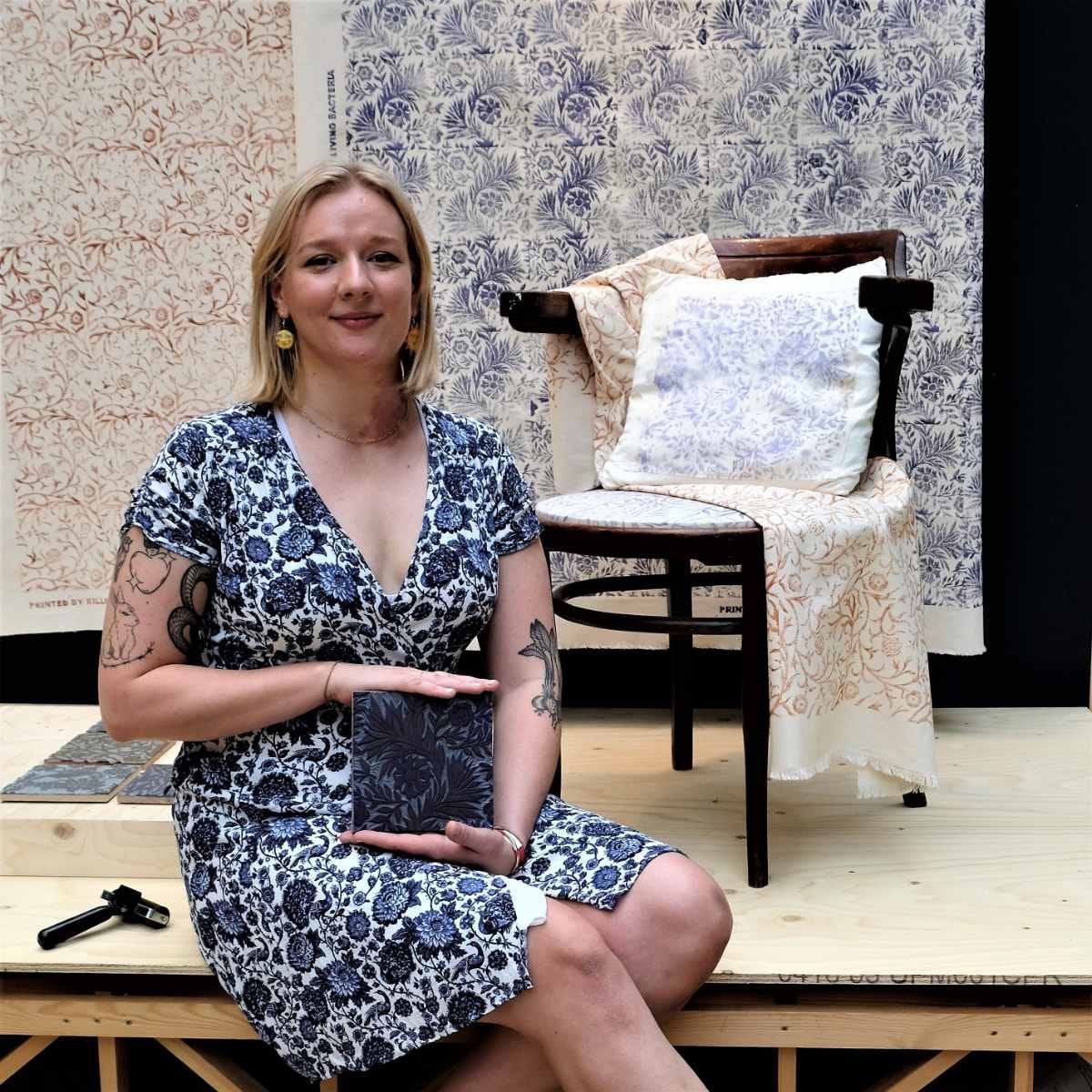
Winner: Annelise Payne for Primordial Pigments
Enthused by the Arts & Crafts movement, Annelise sourced bacteria from soil and water around the original William Morris textile workshop in Merton Mills, and developed a “fully microbial” colour palette. She then traditionally block-printed a Morris-inspired design onto fabric, but replaced conventional dyes with pigment-producing bacteria. “This process gives equal agency to living organisms, letting the bacteria grow and develop over time to reveal colours and patterns on the fabric.” She adds: “William Morris took inspiration from the many flora and fauna that surrounded him. He advocated for the preservation of traditional craft practices and the use of natural materials in defiance of the Industrial Revolution. I’m taking his ideas into the 21st century.” Bacterial pigments grow independent of season, need no chemicals or land, and very little water. They could provide a more regenerative solution to colour and dye within the textile industry. Annelise is a graduate of the MA Material Futures course at Central Saint Martins.
THE BARBARA AWARD FOR OPEN SOURCE DESIGN

Winner: Dhruv Shah for Decentralised Mycelium Housing
Decentralised Mycelium Housing is Dhruv’s self-build project aiming to make a house achievable for people in poorer countries with no capital and low skills. Published open source on the internet is a way of using auxetic lattice jute moulds to make 50cm x 50cm blocks from wheat/rice straw and oyster/reishi spawn (mycelium). Laid on top of each other, the blocks are stabilised with scaffolding until the mycelium fully grows and binds the house together – a decentralised system implemented on site. “Biodesign, sustainable design, and social responsibility are at the core of my design practice,” says Dhruv, who is a graduate of the MA Industrial Design course at Central Saint Martins.
THE DESIGN-NATION AWARDS
The Sustainability Innovator Award
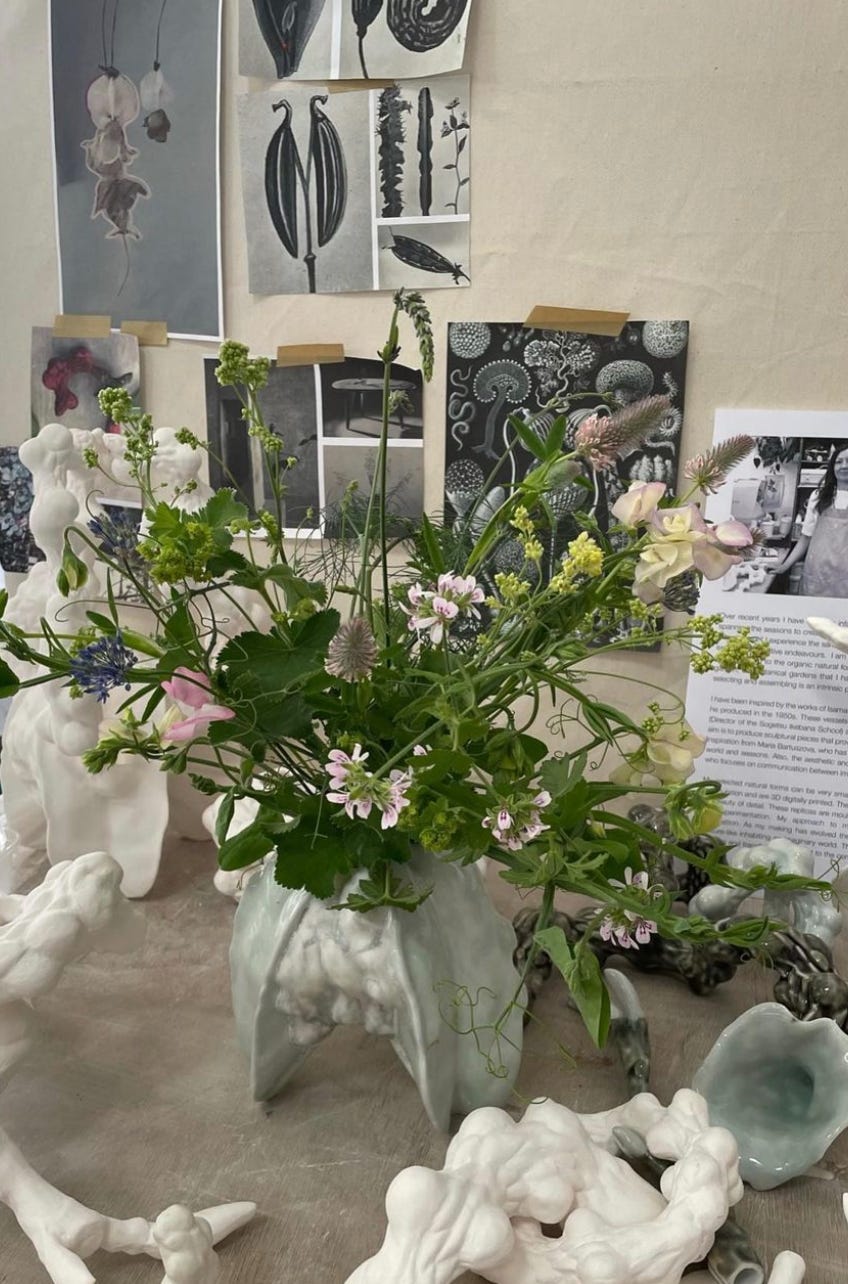
Winner: Ela Niznik for Nurturing Nature
Absorbed in nature, Ela carefully witnesses seasonal changes, noting cycles of growth and decay. To map such transitions, she collects natural forms, which are reproduced digitally and then made into plaster moulds. From these come slip-cast ceramic sculptures, often with “wells” inside which can hold flowers. Ela is particularly influenced by the garden she herself has created and maintains: “I am infatuated with my garden: it fills my soul,” she says. Ela has an MA in Ceramics from Staffordshire University.
The GRADUATE INNOVATOR AWARD
Winner (1) Caroline LA Wheeler
See above
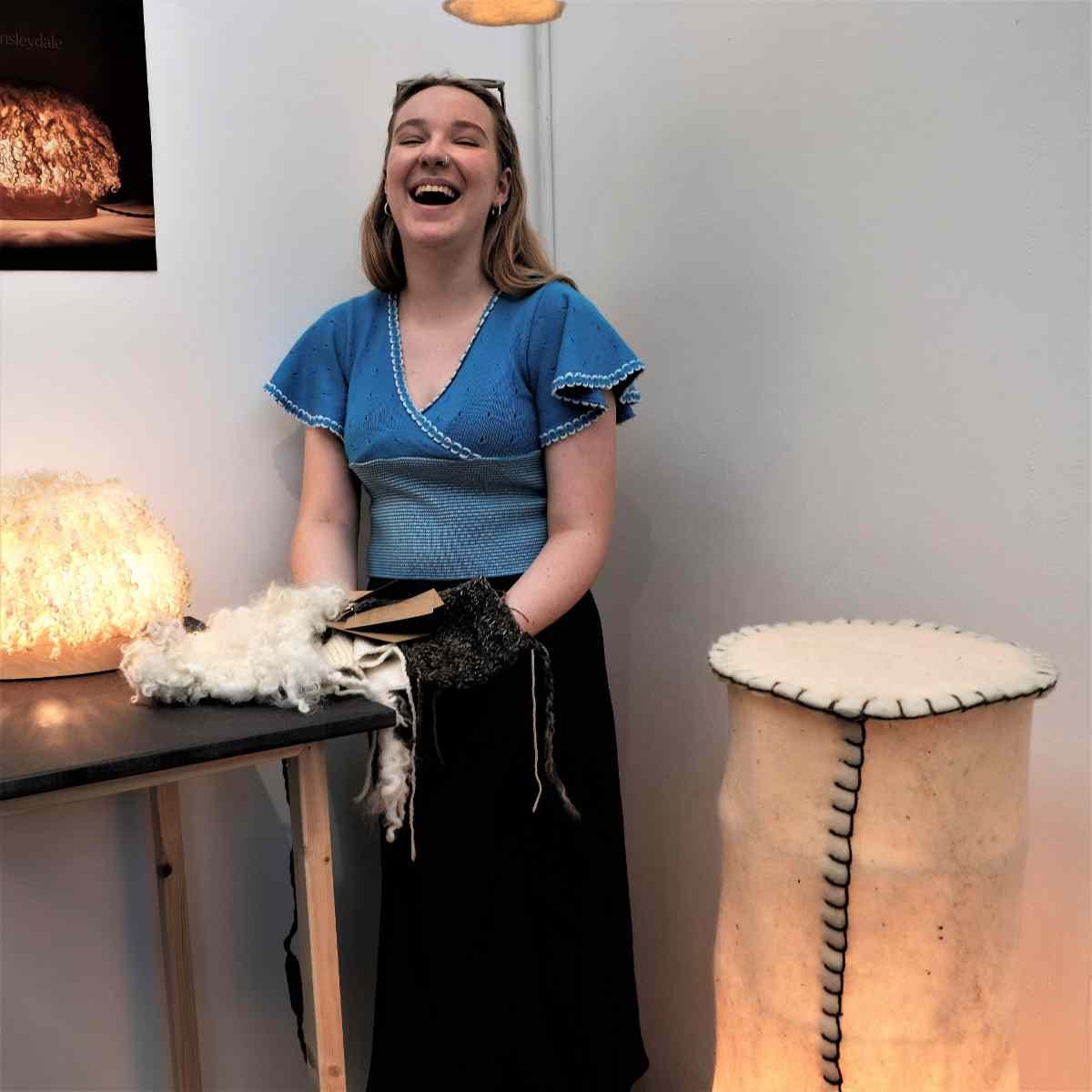
Winner (2) Rosie Lee Hood
Rosie’s Floccus project is an exploration of the unique beauty of British wool – “I’m hoping to cast a new light on our favourite forgotten fibre.” A trio of lamps is each made from 100% fully-traceable pure breed British wool. “By highlighting the unique characteristics of just three of our native breeds, Floccus showcases the natural beauty of this wonderful material,” she says. Rosie is a graduate of the BA Furniture and Product Design course at Bath Spa University.

